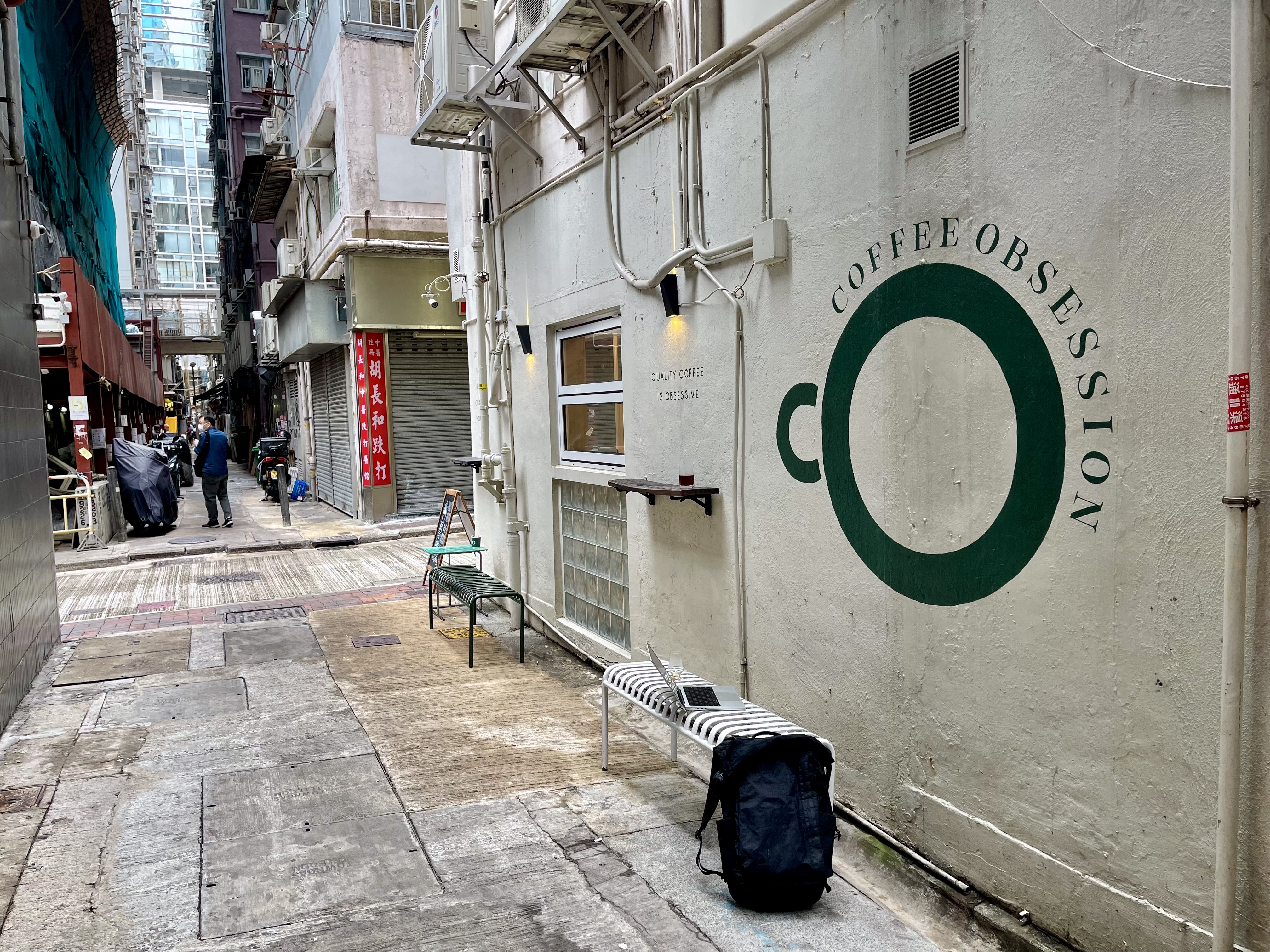I sit on a bench in an alley, leaned against the concrete wall of the coffee shop. Next to me water trickles down the gutter from the earlier showers. It may rain again. The construction site across the way is wrapped entirely in blue fabric, over the thousands of bamboo poles. The building will be thirty stories. It’s not terribly remarkable in this North Point neighborhood.
I’m here because the coffee is good. Quality coffee without much hassle is an art. Fancy coffee is thick on the ground these days. Everyone has started a coffee shop in the past two years. They’re not closed by the government’s lockdown on bars and evening dining. They’re popular with the wfh crowd. They don’t need international tourists, so aren’t hurt by the last two years of border closures. With no where to go, Hong Kongers are exploring their city more than ever, hunting out corners unknown. That there are still so many after two years is a testament to this place’s incredible depth. There are dozens of hikes and waterfalls I haven’t yet seen. Beaches likewise. Coffee shops likewise. Because, though we adventure, mostly we enjoy the neighborhoods we know, the places close to where we live. Mostly we adventure close to home, now that we can not go far afield.
Men rattle their carts down the alley beside me, filled with recycling, or deliveries, or inventory for small shops somewhere out of site. Like all good big city alleys, this one is a thoroughfare, just for the back end of the commerce that occupies the larger streets. It is full of scooter parking, of trash and recycling, of workers on their smoke breaks, of chairs for building attendant’s lunches, of shop back doors and hotel fire escapes. Alleys aren’t the glamorous parts of cities, they’re the required parts, the things that are too often eliminated in nice drawings, in recreations, in Disney versions. Disney, of course, puts all the alley tasks underground, in tunnels, so staff can emerge in place and trash can disappear, setting impossible standards for the rest of the world.
I like the alleys. I like the view of real life they present, of breaks and deliveries and trash removal, even if I don’t appreciate the smoke. I don’t complain though. I’ve come, after all, to where the smokers escape to.
